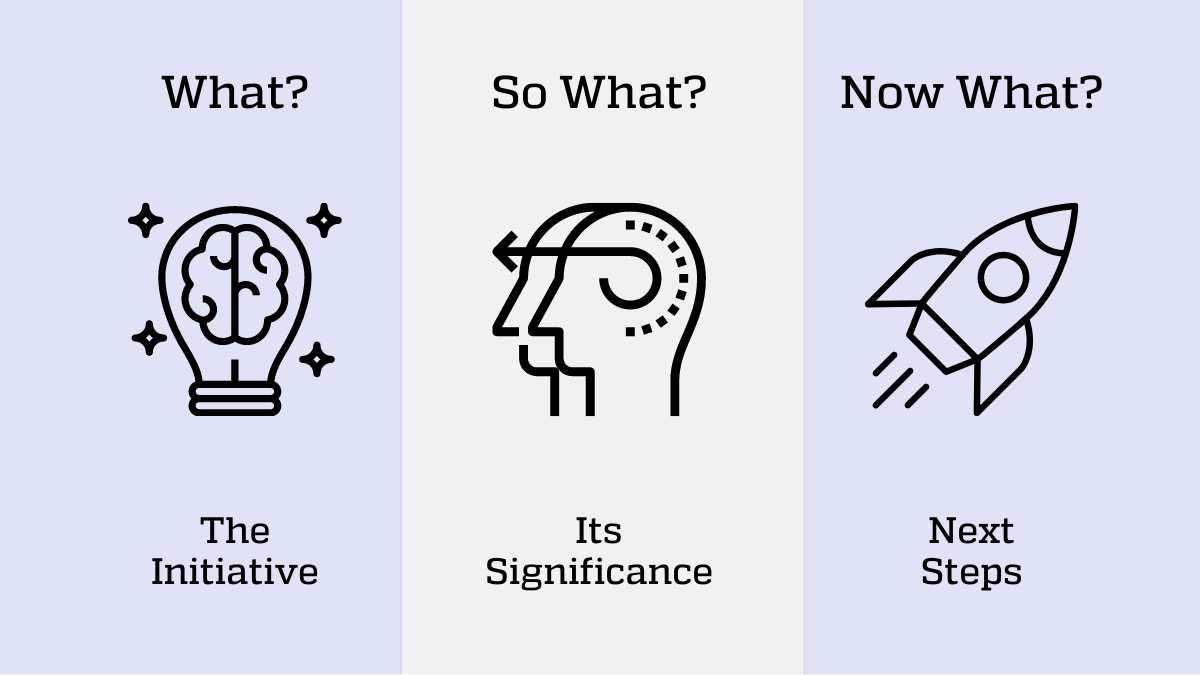 Effective communication in our fast-paced world has never been more important.
Effective communication in our fast-paced world has never been more important.
We each need to communicate in ways that are clear and stick with those with whom we are communicating.
One tried and true formula for this is outlined in Matt Abrahams recent article in Harvard Business Review. He suggests that we structure many of our communications around three important questions:
*What? Describe and define the facts of the situation.
*So What? Discuss the implications and importance of the situation, and how this is relevant to the people with whom you are communicating.
*Now What? Brainstorm a call to action. What do we do next? Who will take accountability for which next steps?
One obvious application of this is for a meeting agenda. For every item, the person in charge of that topic should explain:
What?: The facts connected to the issue. Example: “Our biggest client has just asked for 25% additional products/service for next quarter.”
So What?: The implications. Example: “Since we are in charge of production, we need to figure out how to meet this request. Is this just for next quarter, or might they ask this again? Let’s find out. We are not staffed for this, so we need will need figure out a solution. Other implications?”
Now What?: Brainstorm solutions and set accountability. Example: “Rob, please take this on and ask your team to brainstorm possible solutions. Please bring us your best three options to our meeting on Thursday. Let me know if you need anything before that.”
The boss of this meeting can use the same formula to report to their boss:
What?: “As you know, our biggest client asked for a 25% increase in products/services next quarter.”
So What?: “Obviously we are not staffed for this.”
Now What?: “We evaluated the options. Since we found out this is just for next quarter, we are bringing in some contract workers to help us meet the requirement.”
It’s a simple, logical formula that can make communications clear and to the point. No drama. Just the facts and then a structured process to address the issue. Try it at your next team meeting or one:one with your boss.
*Ideas for this blog taken from: Abrahams, M. “A Simple Hack to Help You Communicate More Effectively.” Harvard Business Review online, January 4, 2024.